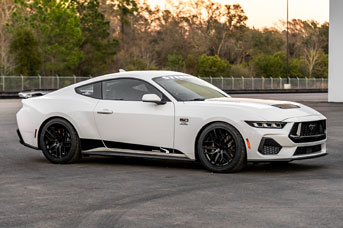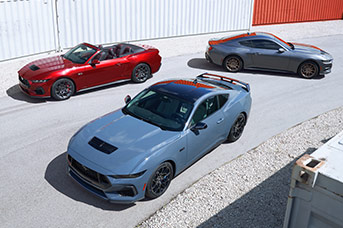The Ford Fusion - A Retrospective

Table of Contents
It’s easy for a Ford fan to get excited about a Mustang and the possibilities of what modifications can bring. But the reality is that the Mustang isn’t always a practical vehicle, especially if you need ready access to the back seats or want to squeeze every mile out of a gallon of gas.
For many, the second-generation Ford Fusion keeps owners in the Blue Oval family while opening the door to performance enhancements and customization. Launched for the 2013 model year, the second-gen Fusion marked the automaker’s last sedan for the U.S. market when it was discontinued in 2020.
Nonetheless, the CD4 chassis provides a solid foundation for a range of powertrains and creates opportunities for owners looking to transform their family-friendly rides. Among the engine options, the 2.0L EcoBoost stands out as a particularly potent choice, offering a significant increase in performance over the base models. The 2017 release of the Sport trim dialed up the Fusion’s capabilities via standard all-wheel drive and a 325-horsepower 2.7-liter twin-turbo V6.
It all adds to a Fusion that can be easily upgraded without compromising functionality. Sticking with under-the-skin modifications, like a cold air intake and rear sway bar, gives the Fusion sleeper qualities. On the other hand, adding lowering springs helps with handling while telling the world this is no ordinary family sedan.
Here’s a breakdown of essential Ford Fusion modifications, many of which only require modest DIY skills
Breathe Easy (Cold Air Intake)
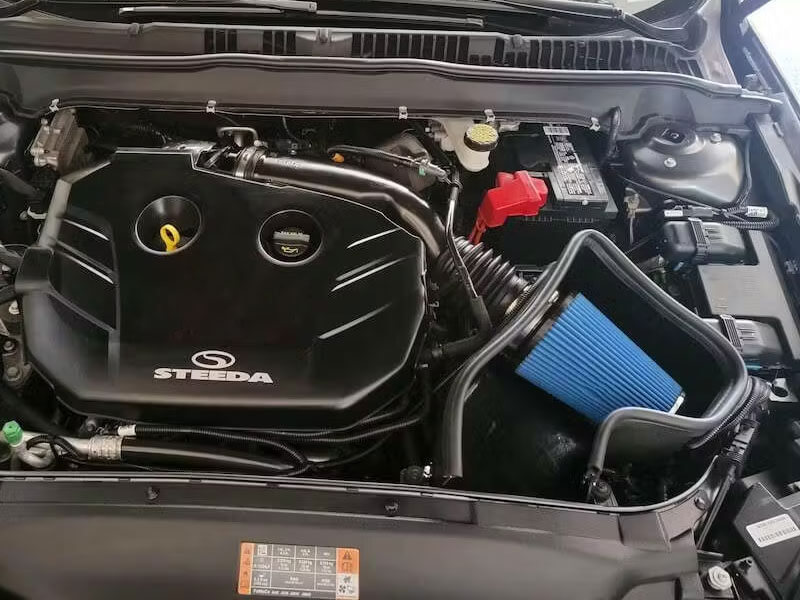
The first place to start modifying a Ford Fusion is under the hood with a cold air intake. This simple idea allows the engine to draw in cooler, denser air, resulting in noticeable power and fuel economy gains. Steeda's cold air intake for the Fusion is designed to fit multiple engine variants, including the 1.6L, 2.0L, and newer 1.5L EcoBoost engines. There’s also an option for the twin-turbo V6.
The system incorporates sever key elements:
- Velocity Stack smooths out the airflow as it enters the intake tube, reducing turbulence.
- Sealed Cold Air Box isolates the air filter from hot air in the engine bay.
- High-Flow Air Filter A washable filter supports peak airflow while providing superior filtration.
- Factory Cold Air Feed Utilization ensures a consistent supply of cool air under varying driving conditions.
Based on Steeda’s extensive history with the Fusion, performance improvements include up to a ten-horsepower gain on the 1.6L EcoBoost engine and a notable 18-horsepower increase on the 2.0L variant. An average fuel economy improvement of 2 miles per gallon is equally as significant. Steeda’s long-term test car, a 2013 Fusion with over 200,000 miles, yields an average of 33 MPGs and 37 MPGs in some cases.
Keep It Together (Strut Tower Brace)
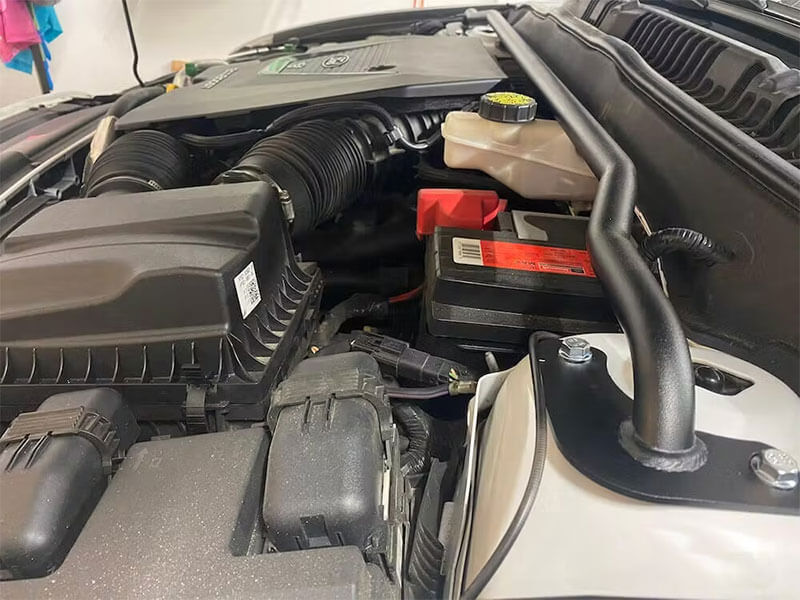
While the second-generation Ford Fusion is built on a robust and capable platform, upgrades that can enhance drivability and structural integrity are available. One is a strut tower brace that connects the two strut towers and reduces chassis flex. This add-on delivers a lot of bang-for-your-buck benefits, including:
- Upgraded Handling: By minimizing flex, the strut tower brace ensures more precise and predictable handling, particularly during aggressive driving or cornering.
- Enhanced Ride Quality: Adding stiffness can improve ride quality by reducing chassis movement over bumps and other road imperfections.
- Reduced Wear and Tear: By limiting flex, a strut tower brace can help prevent the development of squeaks and rattles over time; a particularly valuable benefit for high-mileage vehicles.
- Improved Steering Feel: After installing a strut tower brace, many drivers report a more direct and communicative steering feel, enhancing the overall driving experience.
Best of all, a strut tower brace is a straightforward bolt-on modification that can be easily removed at trade-in time
Get A Handle On It (Rear Sway Bar)

The second part of a Ford Fusion chassis upgrade involves adding a rear sway bar, which limits body roll during cornering. This upgrade, also known as an anti-roll bar, connects the left and right sides of the suspension and offers numerous advantages:
- Reduced Body Roll: Increasing resistance to body roll makes the car feel more planted and stable during cornering.
- Improved Turn-in Response: A stiffer rear sway bar can help induce a slight oversteer tendency, making the car feel more eager to turn into corners.
- Enhanced Driver Confidence: The more predictable handling characteristics can inspire greater confidence in the driver, potentially leading to improved lap times on the track or more enjoyable backroad drives.
- Maintained Ride Quality: Unlike some other suspension modifications, upgrading the rear sway bar typically has minimal impact on straight-line ride quality.
Importantly, this upgrade achieves these handling improvements without sacrificing the car's comfort over bumps and other road imperfections. In addition, installation is uncomplicated, requiring jack stands and basic hand tools.
Access Is Everything (Hood Strut)
Installing hood struts on a Ford Fusion won’t help with acceleration or cornering, but it will make your life easier. These gas-charged struts make opening the hood a breeze and upgrade the ownership experience, thanks to:
- Improved Access: With no prop rod in the way, you have unobstructed access to the entire engine bay.
- Enhanced Safety: The gas struts provide secure and stable support for the hood, eliminating the risk of accidental closure.
- Added Convenience: Opening the hood becomes a one-handed operation, with the struts lifting and holding it.
- Aesthetic Appeal: Hood struts give the engine bay a cleaner, more premium look, which is especially appreciated at car shows or meetups.
Made For Carving (Lowering Springs)
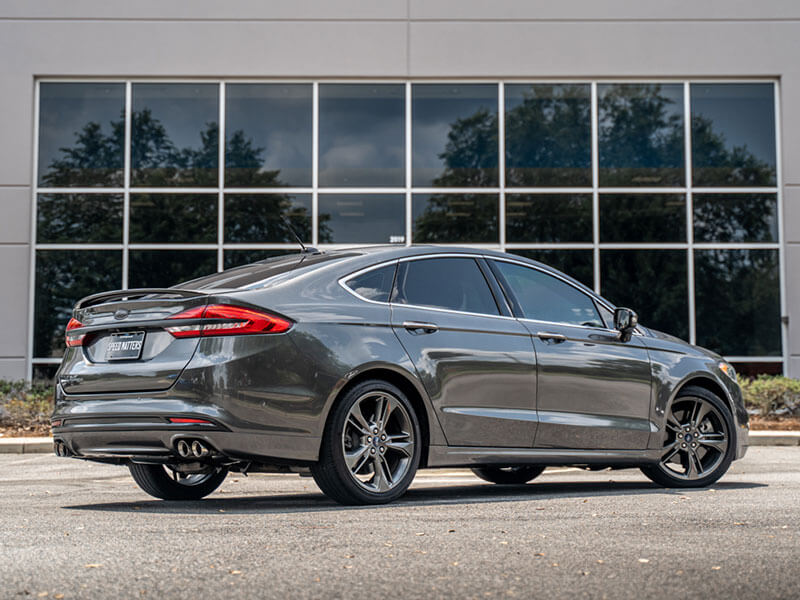
Canyon carving in a Ford Fusion doesn’t have to be wishful thinking, thanks to lowering springs. Steeda’s setup offers a drop of 0.875 inches, which may not sound like much, but it’s enough to transform how an ordinary Fusion looks and drives. Here’s what to expect:
- Improved Handling: Lowering the car's center of gravity can reduce body roll during cornering, resulting in more responsive handling.
- Better Aerodynamics: A lower ride height can improve the car's aerodynamic profile, potentially leading to better high-speed stability and even marginal improvements in fuel efficiency.
- Enhanced Appearance: The reduced wheel gap gives the Fusion a sportier, more planted look.
- Constant Comfort: By maintaining the factory spring rate until reaching the progressive range, these springs aim to preserve ride quality for daily driving while offering improved performance when pushed harder.
While lower springs are an excellent stand-alone upgrade, they can take Fusion handling to the next level when paired with performance dampers. Also, if you're considering a rim and rubber upgrade, keep in mind how new wheels and tires can impact suspension geometry. Make a plan to pull all these elements together, even if you’re not making the modifications at once.
More Power, Please (Intercooler)
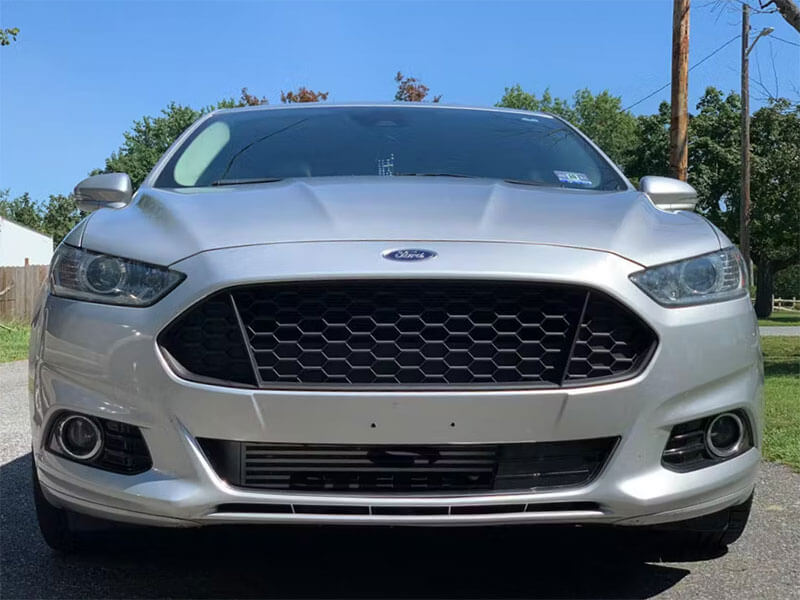
Enthusiasts have long known what the right intercooler can do for a turbocharged engine. While factory intercoolers are fine for the masses, they leave much on the table, especially regarding the EcoBoost powerplants in the second-gen Fusion. Steeda’s precision-engineered intercooler maximizes the performance of the 1.6L and 2.0L EcoBoost engines and delivers the following benefits:
- Improved Cooling Efficiency: The larger surface area and optimized core design of the Steeda intercooler allow for more effective heat dissipation than the stock unit.
- Lower Intake Air Temperatures: By providing cooler air to the engine, the intercooler allows for more aggressive ignition timing and boost pressures, translating to increased power output.
- Consistent Performance: A more efficient intercooler helps maintain lower intake temperatures even during extended periods of high-load driving, such as track days or spirited backroad runs.
- Engine Longevity: Cooler intake temperatures reduce the risk of detonation, helping to protect the engine, especially when running lower octane fuels.
One of the standout features of the Steeda intercooler is its ability to maintain the factory grille shutters. This is particularly important for the 1.6L models where tuning options are limited, as it allows for retaining this fuel-saving feature while still providing the benefits of improved cooling.



